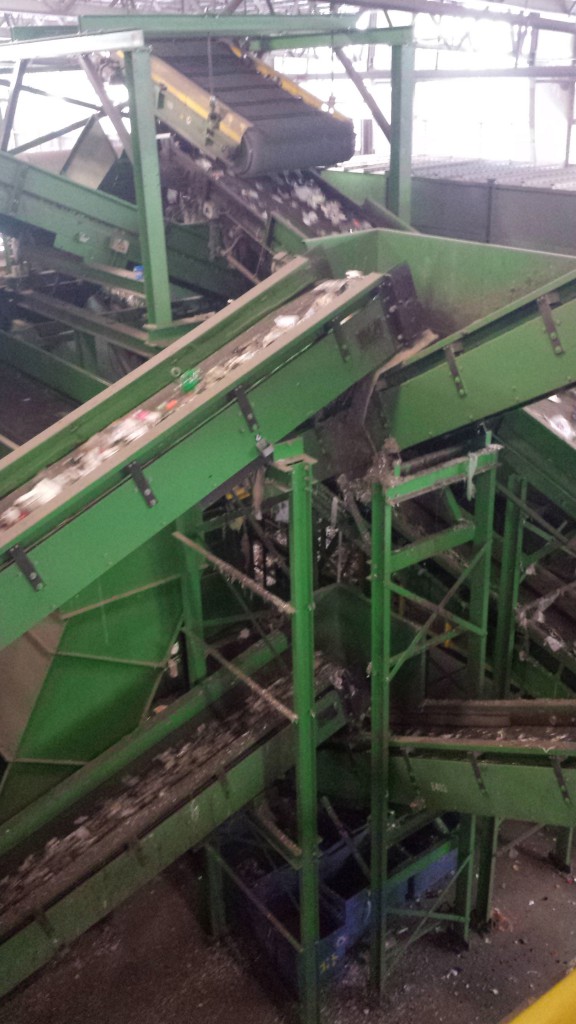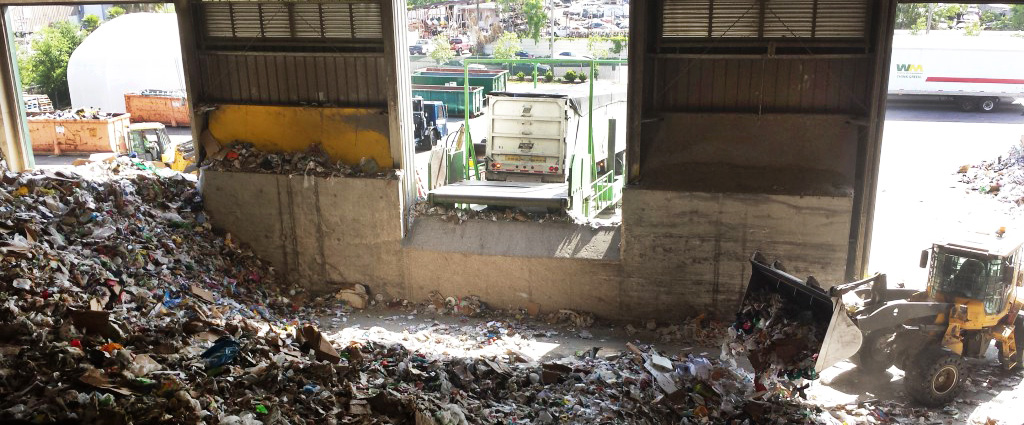SUSTPACK 2015 started early Tuesday with a tour of place many consumers will contribute to each week, but will never think about — A Waste Management facility. The tour of the Tampa, FL facility started with an introduction to Waste Management’s (WM) recovery numbers and a brief overview of what materials the Tampa facility can recycle. A few of the recycling figures stood out to me — an admitted newbie to the recycling and sustainability industry.
- In 2010, the U.S. produced 250 million tons of municipal solid waste
- While paper and paperboard take the prize for biggest percentage of total municipal solid waste (28.5%), diapers alone represent 3.4% of total municipal solid waste!
- Roughly 34% of total municipal solid waste is recycled, meaning 1/3 of our trash is diverted from landfills and other garbage disposal locations.

Then, it was time to see where the recycling magic happens. Inside the warehouse we were able to watch as workers made split second decisions about what had to be taken out of the recycling flow. Some of my favorite random objects that people had recycled included yellow caution tape, a dust bin, and two closet doors. It reinforces the belief that recyclability education is very much lacking in the U.S.
While the closet doors may have been an entertaining outlier, seeing how many plastic bags and styrofoam containers ended up at the WM facility I realized firsthand how important the How2Recycle program and website is as a resource to consumers. When consumers see the numbers on the bottom of different packages, they often think it can automatically be recycled; I definitely did before I started working for GreenBlue.
Beyond promoting consumer recycling, the tour of the WM facility taught me so much about the limitations of individual facilities. While this particular facility receives products from a single stream recycling system, many counties are not able to utilize this type of collection method. Single stream reduces the effort required on the part of the consumer, but increases costs at the facility. Dual stream requires consumers to be more educated about how to properly separate recyclable products. The facility representative expressed how he would like to accept more items, like styrofoam, but how it just isn’t possible with equipment at his facility. As an average consumer who recycles, I was led to believe that all recycling facilities accept all the usual suspects: water and soda bottles, printer paper and magazines. This just isn’t the case and it really takes due diligence on the part of the citizen to learn about their local recycling services.
I believe that we communications professionals working in the recycling and sustainability sphere have our work cut out for us when it comes to informing the public about these “invisible” facilities and what consumers can do to improve recycling output.



